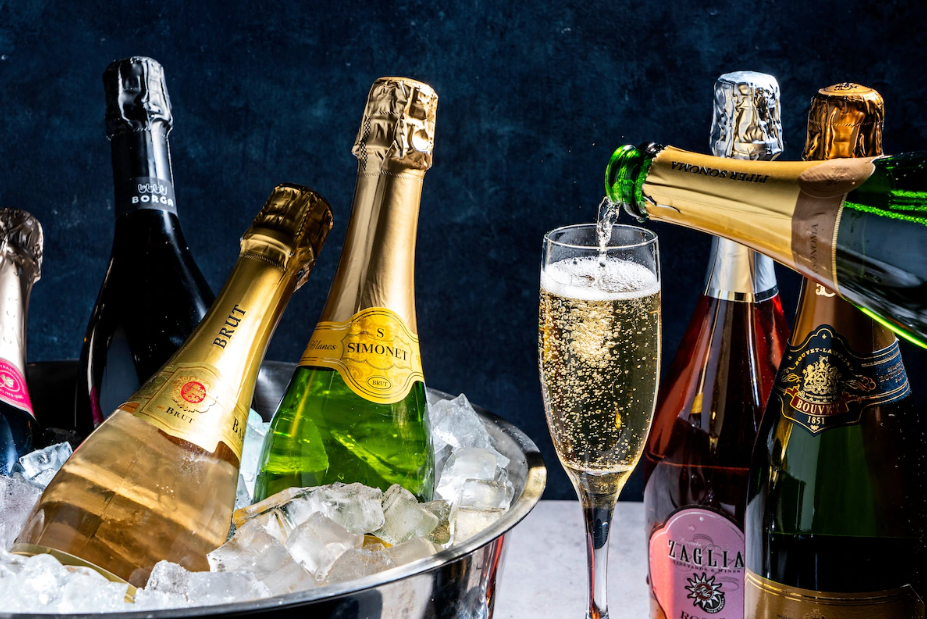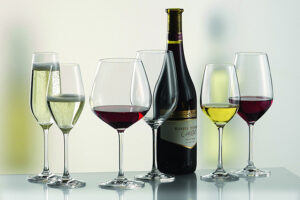What are the key distinctions between sparkling wine and Champagne? The majority of you could be worried about this usual query. Are these alcoholic beverages distinct from one another? Sure, it is. Some foundational knowledge is beneficial, even though the great majority disagree.
The following paragraphs will explain the variations between sparkling wine and Champagne. Additionally, you will discover a solution to any name complications that can develop based not just on the country of origin but also on other elements that impact how the product is produced.
The Taste and the Production Method
Some of the fundamental differences we will be going over below is essential since more than the designation of origin may distinguish the two sorts of alcoholic beverages. These include the techniques used for production and fermentation and the grapes used, all of which impact the tastes.
The main difference between Champagne and sparkling wines is the method of production. Sparkling wines may be produced in various ways outside only Champagne.
Tracing the History’s Pages
Champagne was the original name for this alcoholic beverage. It stands out because it contains a lot of gas. In addition, this type of wine takes its name from the Champagne area of France. Given their strong sense of national pride, it makes sense that the French would want to preserve the exclusivity of champagnes. They thus forbade the use of the word “Champagne” outside of France.
Champagne has been made in the same French region since the 1700s. However, since the European Union granted France the protected designation of origin (PDO) for Champagne, only France can use the name “Champagne” to refer to this sparkling wine.
What Constitutes the Key Differences?

The Champagne production process uses Pinot or Chardonnay grapes from the Champagne region. On the other hand, other sparkling wines can be produced using grape strains and different carbonation techniques. The planning stage is the most crucial element that matters.
To make Champagne, a second fermentation-based process is used. Inside the bottle, where it also creates carbonation, this fermentation occurs. Champagne is bottled with carbon dioxide and kept until the bottle is opened. This is why the cork pops out of the bottle under intense pressure.
Several processes, including grape fermentation, crushing, and CO2 injection, may be used to generate any sparkling wine. In addition, a variety of manipulation techniques makes sparkling wine. Therefore, be specific about what you want while looking for late-night booze delivery in my area.
Other areas of distinction include:
- The Container
Champagne bottles are much thicker than ordinary bottles due to the pressure they must withstand (between 4 and 6 kg at 20 °C). While sparkling wines are served in standard wine bottles.
- Plugs
The head and body of Champagne may be recognized when the bottle is opened. It is a result of the cork’s cylindrical shape, which is utilized to close the bottle’s mouth. The pin is likewise pressed into the bottle. However, because they are more affordable, screw closures are frequently used with effervescent wines.
- Bubbles
The tiny, fragile bubbles of Champagne may be seen separating from the glass’s center and moving toward the bottom as it is poured into a glass. Meanwhile, other sparkling wines have more giant bubbles that mimic soda bubbles.
- Classifications
The amount of sugar in Champagne determines its classification and how it is described on the label. So remember to verify the category when ordering Champagne from a 24-hour dial-a-bottle service.
(-3g / L) Brut Nature
Brut Extra (-6g/L)
(-15g / L) brut
Additional Sec (12 to 20g/L)
(17 to 35 g/L) Sec
Demi-Sec (between 33 and 50 g/L)
Dulcet or Douc (+ 50g/L)
Other sparkling wines do not have a classification system, but champagnes do.
- Label
Champagne must contain the term “champagne” (without a capital letter to differentiate it from the French region). In addition, we must ascertain how the object is classified and produced (Champenoise). At the same time, regular sparkling wines do not need to declare the addition of carbon dioxide on the bottle label.
Conclusion:
Now you know all the differences between wine and champagne. Visit the wine bar to taste the best wines at the best wine bar.



